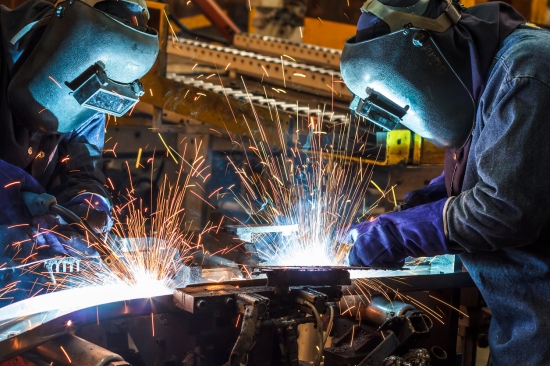2 minute read
UK Manufacturing sector still on the up show February figures
Strong growth in UK manufacturing sector continues positive trend for 2017 as tThe latest Markit/CIPS UK Manufacturing Purchasing Managers’ Index (PMI) showed strong growth in both new orders and output for February, reflecting an upturn in both domestic and overseas business.
The PMI results were posted at 54.6 for February 2017, compared to a record two and a half year high in December 2016 and another close to record performance of 55.7 in January.
Production and new orders continue to grow, although at a slower pace than previous months, as high inflationary pressures continue to affect the industry. Purchasing activity remains on a par with December’s high levels.

Growth in new orders and output / Picture: Getty/iStock
David Johnson, Director at currency specialists, Halo Financial commented “Rates of growth in the industry remain above average, which is a positive sign, and shows the resilience of the UK manufacturing industry,”
“Industry confidence remains high. It’s encouraging to see improvement in both overseas and domestic demand in the latest figures, with the market receiving a boost from Sterling weakness, and, in particular, a steep increase in new export business.”
February figures showed that new export orders were up for the ninth successive month, again tied to the strength of the Pound and an uplift in sales to the USA, Australia, Canada, Ireland, Asia and mainland Europe.
There was also a noticeable increase in UK manufacturing production for February, with particular growth noted across investment, intermediate and consumer goods, and a positive increase in the number of new orders.
The industry outlook is positive for the coming year, given increasing demand, new products, more capital being invested into the industry and many companies planning to expand.
Around 50 percent of UK manufacturers surveyed expect growth to continue and anticipate higher output next year. Only six percent felt there would be a decline.
Employment has continued to increase in the sector and this also has helped boost confidence, with rising headcounts in both larger companies and smaller and medium-sized businesses.
Inflationary pressures continue to take their toll on the industry, however. Some shortages were seen due to rising raw material demand, adding further pressure on suppliers. Like last month, there was also a rise in vendor lead times at the highest rate since 2011. This disruption to the supply chain, along with a weak Pound, has put up purchase prices.
Although inflation in input costs was not as high as that recorded in January, costs remain high, and are in turn increasing output charges.
Neil Lloyd, Sales Director at manufacturing expert solicitors, FBC Manby Bowdler, added: “As expected, the sector continues to perform well. While both domestic and overseas orders remain strong, it’s important we don’t forget that the weakness of Sterling is aiding exports as well as increasing input costs, which is inevitably leading to price increases to the consumer. It’s also extremely pleasing to see the levels of optimism and confidence continuing to remain high; and as we are seeing with our clients, levels of employment increasing.”
David Johnson observed, “The fact that input cost inflation is less worrying than January’s levels could be another positive indicator for the industry. Much depends on the performance of Sterling in the coming months.”
